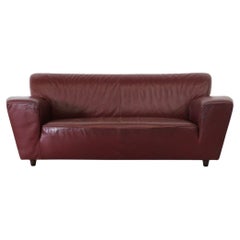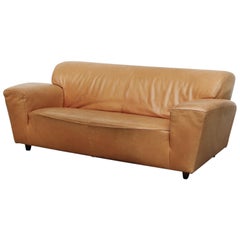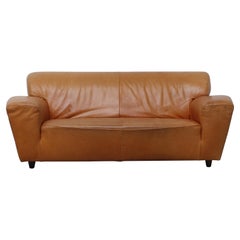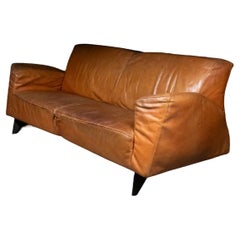Corvette Sofa
Vintage 1980s Dutch Mid-Century Modern Sofas
Leather, Foam, Wood
Vintage 1980s Dutch Mid-Century Modern Sofas
Leather
Recent Sales
Vintage 1980s Dutch Mid-Century Modern Sofas
Leather, Foam, Wood
Vintage 1980s Dutch Mid-Century Modern Sofas
Leather
People Also Browsed
Vintage 1970s Swiss Mid-Century Modern Sofas
Stainless Steel
21st Century and Contemporary Swedish Scandinavian Modern Wall Lights an...
Metal
Late 20th Century Italian Mid-Century Modern Sofas
Leather
Vintage 1970s French Post-Modern Sofas
Fabric
Vintage 1970s Italian Mid-Century Modern Dining Room Tables
Wood
Vintage 1960s Norwegian Mid-Century Modern Loveseats
Leather, Wood
Late 20th Century French Mid-Century Modern Loveseats
Leather, Foam
1990s Italian Post-Modern Loveseats
Steel, Chrome
Late 20th Century Italian Mid-Century Modern Club Chairs
Leather
2010s Italian Organic Modern Chandeliers and Pendants
Natural Fiber
21st Century and Contemporary American Bohemian Chandeliers and Pendants
Brass
21st Century and Contemporary French Brutalist Night Stands
Oak
2010s American Table Lamps
Brass
Vintage 1980s Italian Mid-Century Modern Loveseats
Chrome
Vintage 1970s Brazilian Modern Sofas
Suede, Rosewood
Antique 1710s American Mid-Century Modern Daybeds
Brass
Gerard Van Den Berg for sale on 1stDibs
Modern Dutch design owes a great deal to Gerard van den Berg. While the Netherlands has a rich furniture-making tradition, it took a maverick like Van den Berg to bring it into a new era. His innovative armchairs, lounge chairs and sofas offer a reinterpretation of mid-century modern Dutch designs and have found wide appeal among international customers.
Van den Berg was born in 1947 to a family of designers. His father owned a furniture company in Hellevoetsluis where Van den Berg worked as an apprentice and then designer until he and his brother, Ton, founded their own workshop, in 1974. That company, named Montis, produced mostly upholstered seating for homes and businesses.
At Montis, Van den Berg challenged traditional Dutch furniture forms. Rather than starting with the piece's frame, which he felt was restrictive, he focused on the silhouette. This inspired Van den Berg to create slim and elegant furniture, often featuring angular metal legs and leather upholstery. In 1983, he pioneered the "jacket technique," consisting of a zipped leather cover around a metal frame. Several iconic Montis seats use this technique, including the Chaplin chair, the Butterfly lounge chair and the Rocky sofa.
In 1989, Van den Berg launched his own design studio and began designing for companies like Wittmann, Molteni and Perobell. He left Montis in 1990 to cofound a new company, called Label, with Ton the following year. Label furniture captures the essence of no-nonsense Dutch design. It is comfortable and relaxed, featuring simple forms that are pleasing to the eye.
Van den Berg's irreplaceable contributions to furniture design have garnered multiple awards over the years. Some of the most notable include the Kho Liang Prize, the Mobilia Innovation Award and the Prize for Interior Architecture.
Today, Van den Berg's son Jasper and Ton's daughter, Marieke, manage Label. Van den Berg's other son, Ivo, is also a designer at the company.
On 1stDibs, find Gerard van den Berg seating, case pieces and more.
A Close Look at Mid-century Modern Furniture
Organically shaped, clean-lined and elegantly simple are three terms that well describe vintage mid-century modern furniture. The style, which emerged primarily in the years following World War II, is characterized by pieces that were conceived and made in an energetic, optimistic spirit by creators who believed that good design was an essential part of good living.
ORIGINS OF MID-CENTURY MODERN FURNITURE DESIGN
- Emerged during the mid-20th century
- Informed by European modernism, Bauhaus, International style, Scandinavian modernism and Frank Lloyd Wright’s architecture
- A heyday of innovation in postwar America
- Experimentation with new ideas, new materials and new forms flourished in Scandinavia, Italy, the former Czechoslovakia and elsewhere in Europe
CHARACTERISTICS OF MID-CENTURY MODERN FURNITURE DESIGN
- Simplicity, organic forms, clean lines
- A blend of neutral and bold Pop art colors
- Use of natural and man-made materials — alluring woods such as teak, rosewood and oak; steel, fiberglass and molded plywood
- Light-filled spaces with colorful upholstery
- Glass walls and an emphasis on the outdoors
- Promotion of functionality
MID-CENTURY MODERN FURNITURE DESIGNERS TO KNOW
- Charles and Ray Eames
- Eero Saarinen
- Milo Baughman
- Florence Knoll
- Harry Bertoia
- Isamu Noguchi
- George Nelson
- Danish modernists Hans Wegner and Arne Jacobsen, whose emphasis on natural materials and craftsmanship influenced American designers and vice versa
ICONIC MID-CENTURY MODERN FURNITURE DESIGNS
- Eames lounge chair
- Nelson daybed
- Florence Knoll sofa
- Egg chair
- Womb chair
- Noguchi coffee table
- Barcelona chair
VINTAGE MID-CENTURY MODERN FURNITURE ON 1STDIBS
The mid-century modern era saw leagues of postwar American architects and designers animated by new ideas and new technology. The lean, functionalist International-style architecture of Le Corbusier and Bauhaus eminences Ludwig Mies van der Rohe and Walter Gropius had been promoted in the United States during the 1930s by Philip Johnson and others. New building techniques, such as “post-and-beam” construction, allowed the International-style schemes to be realized on a small scale in open-plan houses with long walls of glass.
Materials developed for wartime use became available for domestic goods and were incorporated into mid-century modern furniture designs. Charles and Ray Eames and Eero Saarinen, who had experimented extensively with molded plywood, eagerly embraced fiberglass for pieces such as the La Chaise and the Womb chair, respectively.
Architect, writer and designer George Nelson created with his team shades for the Bubble lamp using a new translucent polymer skin and, as design director at Herman Miller, recruited the Eameses, Alexander Girard and others for projects at the legendary Michigan furniture manufacturer.
Harry Bertoia and Isamu Noguchi devised chairs and tables built of wire mesh and wire struts. Materials were repurposed too: The Danish-born designer Jens Risom created a line of chairs using surplus parachute straps for webbed seats and backrests.
The Risom lounge chair was among the first pieces of furniture commissioned and produced by celebrated manufacturer Knoll, a chief influencer in the rise of modern design in the United States, thanks to the work of Florence Knoll, the pioneering architect and designer who made the firm a leader in its field. The seating that Knoll created for office spaces — as well as pieces designed by Florence initially for commercial clients — soon became desirable for the home.
As the demand for casual, uncluttered furnishings grew, more mid-century furniture designers caught the spirit.
Classically oriented creators such as Edward Wormley, house designer for Dunbar Inc., offered such pieces as the sinuous Listen to Me chaise; the British expatriate T.H. Robsjohn-Gibbings switched gears, creating items such as the tiered, biomorphic Mesa table. There were Young Turks such as Paul McCobb, who designed holistic groups of sleek, blond wood furniture, and Milo Baughman, who espoused a West Coast aesthetic in minimalist teak dining tables and lushly upholstered chairs and sofas with angular steel frames.
Generations turn over, and mid-century modern remains arguably the most popular style going. As the collection of vintage mid-century modern chairs, dressers, coffee tables and other furniture for the living room, dining room, bedroom and elsewhere on 1stDibs demonstrates, this period saw one of the most delightful and dramatic flowerings of creativity in design history.
Finding the Right Sofas for You
Black leather, silk velvet cushions, breathable bouclé fabric — when shopping for antique or vintage sofas, today’s couch connoisseurs have much to choose from in terms of style and shape. But it wasn’t always thus.
The sofa is typically defined as a long upholstered seat that features a back and arms and is intended for two or more people. While the term “couch” comes from the Old French couche, meaning to lie down, and sofa has Eastern origins, both are forms of divan, a Turkish word that means an elongated cushioned seat. Bench-like seating in Ancient Greece, which was padded with soft blankets, was called klinai. No matter how you spell it, sofa just means comfort, at least it does today.
In the early days of sofa design, upholstery consisted of horsehair or dried moss. Sofas that originated in countries such as France during the 17th century were more integral to decor than they were to comfort. Like most Baroque furnishings from the region, they frequently comprised heavy, gilded mahogany frames and were upholstered in floral Beauvais tapestry. Today, options abound when it comes to style and material, with authentic leather offerings and classy steel settees. Plush, velvet chesterfields represent the platonic ideal of coziness.
Vladimir Kagan’s iconic sofa designs, such as the Crescent and the Serpentine — which, like the sectional sofas of the 1960s created by furniture makers such as Harvey Probber, are quite popular among mid-century modern furniture enthusiasts — showcase the spectrum of style available to modern consumers. Those looking to make a statement can turn to Studio 65’s lip-shaped Bocca sofa, which was inspired by the work of Salvador Dalí. Elsewhere, the furniture of the 1970s evokes an era when experimentation ruled, or at least provided a reason to break the rules. Just about every area of society felt a sudden urge to be wayward, to push boundaries — and buttons. Vintage leather sofas of that decade are characterized by a rare blending of the showy and organic.
With so many options, it’s important to explore and find the perfect furniture for your space. Paying attention to the lines of the cushions as well as the flow from the backrest into the arms is crucial to identifying a cohesive new piece for your home or office.
Fortunately, with styles from every era — and even round sofas — there’s a luxurious piece for every space. Deck out your living room with an Art Deco lounge or go retro with a nostalgic '80s design. No matter your sitting vision, the right piece is waiting for you in the expansive collection of unique sofas on 1stDibs.



